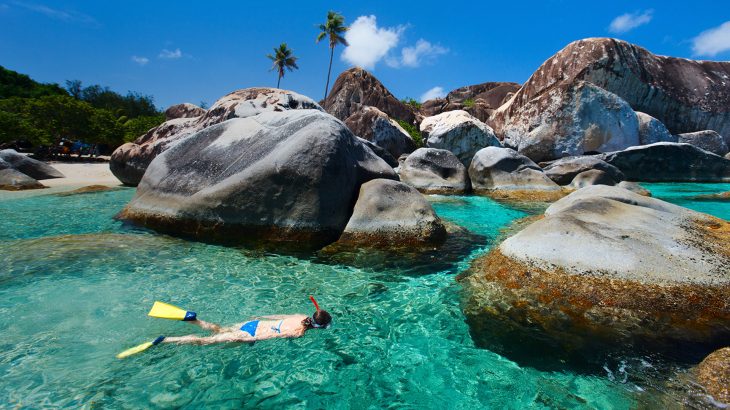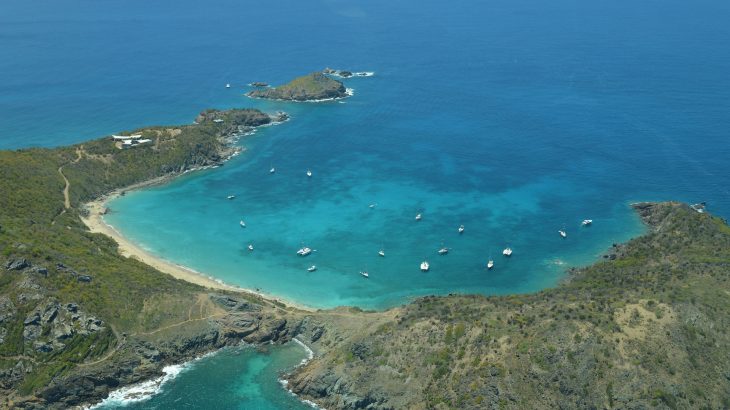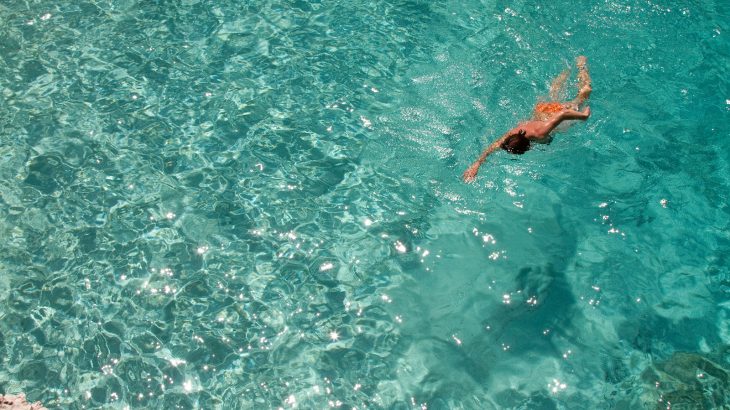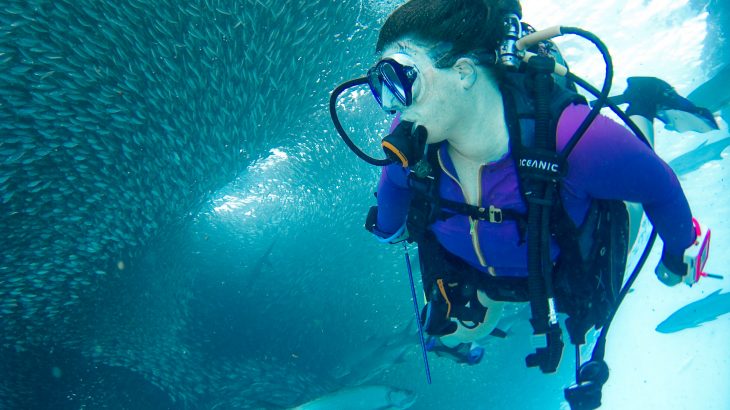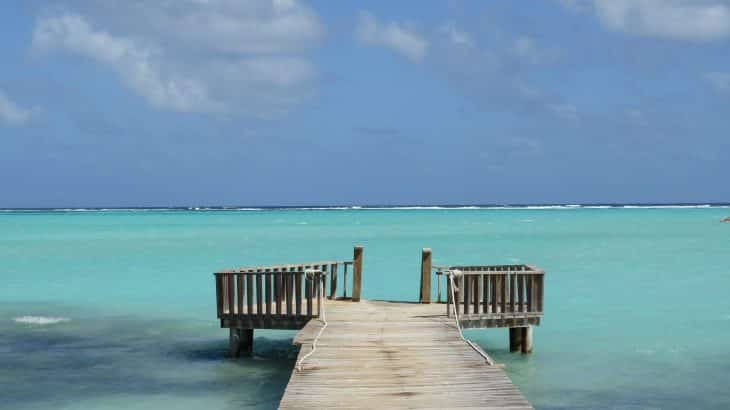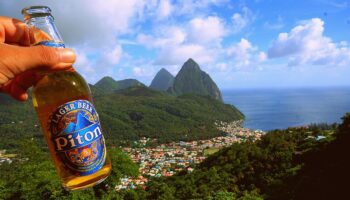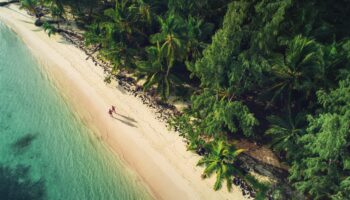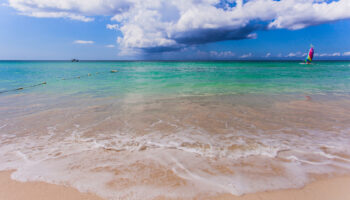With endless white sand, continuous sunshine and brilliant turquoise water, the Caribbean draws over 30 million visitors a year. The warm coastal waters are bursting with marine life, making the Caribbean one of the best places in the world for exploring what’s under the waves.
Fortunately, this subaquatic world isn’t just for those with fancy boats and expensive scuba gear. Much of it is literally just offshore and near the surface. All you need is a mask and a snorkel. Well, that and some direction from us. If you’re thinking about a beach vacation, here are a few of the most exotic beaches for snorkeling and diving in the Caribbean.
Anse De Colombier, St. Barthelemy
It’s a bit of a hike to get here—maybe 20 to 30 minutes—but the vista both above and beneath the water makes it well worth the travel. The water stays clear and calm because of a crescent-shaped bay with surrounding hills that shelter the area from prevailing winds, so it’s even a great place for novice snorkelers. The shallow reef is only 200 yards or so from shore, and the area is simply teeming with marine life. Here you can see colorful angelfish, starfish, moray eels and much more. Some of the ocean life hangs closer to shore so the minute your mask hits the water, you’re likely to see exotic forms of aquatic life.
Trunk Bay, St. John
One of the most stunning beaches in the Caribbean, Trunk Bay, St. John is truly a slice of heaven. We recommend taking the ferry early in the morning so you can enjoy a piece of paradise all to yourself before the rush arrives. Trunk Bay’s topaz water is home to corals, rays, octopi and tropical fish of every shape and color imaginable. Providing both direction and identification of marine life, signs will guide you through a 700-foot underwater snorkeling trail. Back on shore, amenities include showers, changing rooms, equipment rental, a snack bar, beach chairs and umbrellas. With so much to offer, it’s no wonder why Trunk Bay is one of the most photographed beaches in the U.S. Virgin Islands.
Cane Bay, St. Croix
A massive seven-mile trench known as “The Wall” awaits exploration just offshore this U.S. Virgin Island. You could throw a stone from the beach and hit the shallower parts of the reef—it’s that close. Upon entry into the water, fish come into view almost immediately. As you swim about 400 feet from the shore towards this populous barrier reef, the depth drops from 40 feet to an astounding 3,200 feet. This deep domain is vivid with colors of vibrant corals and radiant fish patterns. Common sights include octopi, eels, seahorses, lobster, reef sharks and sometimes even dolphins and whales can be seen here. On land, you can make time for meditation in the historical St. George Botanical Gardens or take the Taste of Twin City Tour and learn of St. Croix’s delicious influence throughout Caribbean cuisine.
18 Palms, Bonaire
A diver’s utopia, 18 Palms beach is known for its reefs and spectacular marine life. Named after the 18 palm trees surrounding this area, calm and clear water along with ease of access makes this an ideal location for snorkeling or diving. As you enter the shallows, a soft barren seabed makes a home for much smaller fish. However, as you follow the sandy slopes deeper along the ocean floor you will notice much larger creatures thriving among the aquatic forest of brain corals and polyps. With the usual reef fish bursting with color, you can see squid, octopi, rays, tarpon and turtles. On the beach, you have access to public restrooms, showers and you can rent scuba equipment from local vendors. After a long day of snorkeling or diving, hit the town for dinner and have a taste of fresh lionfish at a local restaurant.
Tags: Caribbean
